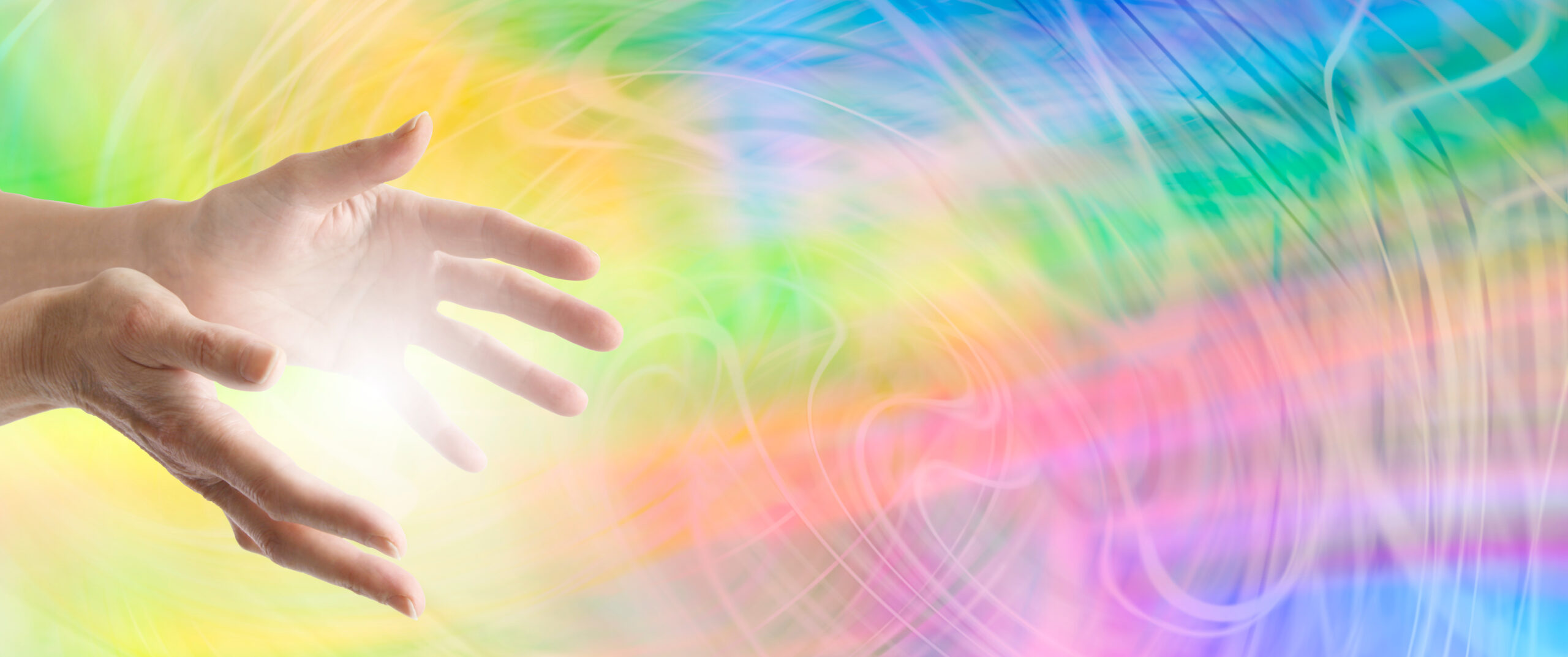
Energy healing is a fascinating blend of ancient tradition and modern curiosity. Rooted in practices like Reiki, Qigong, and Therapeutic Touch, it seeks to balance the body’s energy fields to promote health and well-being. While some view it as mystical, others see it as a valuable complement to conventional medicine. Over the years, researchers have explored its potential, sparking debates and breakthroughs alike. In this post, we’ll dive into the mysteries of energy healing including its history, scientific studies, and future possibilities of energy healing. Whether you’re a skeptic or a believer, this journey into the world of energy offers fresh insights and inspiration for holistic wellness.
1. Exploring the Concept and History of Energy Healing
What is Energy Healing?
At its core, energy healing involves balancing the subtle energy fields within and around your body. It’s based on the idea that the body isn’t just physical; it also has energetic layers that influence health. These layers, often called the “aura” or “biofield,” are believed to interact with the physical body. When energy flows freely, practitioners say you feel healthier and more balanced. Conversely, disruptions or blockages in energy are linked to stress, illness, or emotional imbalance.
One example is Reiki, a Japanese energy-healing practice. Reiki practitioners place their hands lightly on or near the body to channel universal energy, aiming to promote relaxation and healing. This idea—that energy can be guided by intention—remains central to most energy-healing systems.
Where Did It Begin?
Energy healing has ancient roots, stretching back thousands of years. Let’s explore a few influential traditions:
- China: Qigong, part of traditional Chinese medicine, combines movement, breathing, and meditation to harmonize “Qi,” the life force. Acupuncture also draws on this concept by targeting energy pathways called meridians.
- India: Ayurvedic healing incorporates chakra systems, viewing these seven energy centers as crucial for health. For example, the heart chakra is linked to emotional well-being.
- Indigenous Practices: Native American tribes use energy-based rituals, like smudging with sage, to cleanse spiritual and physical spaces. Similarly, shamans in South America employ energy work during healing ceremonies.
These practices share a common theme: healing the invisible energy that connects the body, mind, and spirit. Each culture approaches energy differently, yet they all highlight its central role in health and spirituality.
How Has It Evolved?
Over the decades, energy healing has transformed. Early forms were deeply spiritual and often tied to religious practices. However, in the 20th century, these techniques began to adapt to modern frameworks. For instance:
- Mid-1900s: Reiki gained traction in the West thanks to Hawayo Takata, who brought this Japanese practice to Hawaii and beyond.
- 1980s-1990s: Energy psychology emerged, blending energy concepts with psychological therapy. Techniques like Emotional Freedom Techniques (EFT) combine tapping on meridians with affirmations to relieve anxiety.
Today, energy healing is no longer confined to spiritual or alternative circles. Yoga studios offer chakra workshops. Hospitals include Reiki as a complementary therapy. Energy healing has steadily evolved from mysticism to an accepted part of wellness.
Comparing Energy Healing and Conventional Medicine
Energy healing and conventional medicine differ in approach but can complement each other. Conventional medicine focuses on the tangible—the body’s systems, organs, and symptoms. It’s evidence-based, targeting specific diseases with treatments like drugs or surgery. Think of it as the “fix-it” model of health.
Energy healing, on the other hand, works holistically. It views the body as interconnected with the mind and spirit. A headache might not just be a physical problem but a signal of emotional or energetic imbalance. For example, a Reiki session might focus on releasing stress stored in the body to alleviate chronic migraines.
The two approaches aren’t mutually exclusive. A cancer patient, for example, might undergo chemotherapy to target tumors while using Qigong to improve mental clarity and reduce fatigue. Together, they create a more comprehensive healing strategy.
Eastern and Western Philosophies
Eastern philosophies often see energy as integral to health, while Western science tends to focus on the physical and measurable. However, the gap between these perspectives is narrowing.
In Eastern traditions:
- Energy flows through pathways like meridians or nadis. Practices like acupuncture or Tai Chi aim to restore this flow.
- Illness is viewed as a disruption in balance. Healing focuses on prevention and restoring harmony.
In Western medicine:
- While skeptics doubt energy fields, concepts like the body’s electromagnetic signals are gaining attention. For example, electrocardiograms (ECGs) measure the heart’s electrical activity, indirectly reflecting energy.
- Studies in psychoneuroimmunology show how emotions (often linked to energy states) influence immune function.
Both philosophies are starting to converge. Many doctors now advocate for integrative medicine, combining traditional treatments with complementary energy therapies. For instance, the Mayo Clinic incorporates energy healing to support pain management and stress reduction.
Why This Matters
Understanding energy healing’s origins and evolution helps break down stereotypes. It shows that these practices aren’t just “New Age” trends but part of a global, historical effort to understand health in holistic terms. By examining its cultural roots, you gain a deeper appreciation for its diversity.
These insights also encourage you to approach energy healing with curiosity rather than judgment. Whether you’re drawn to chakras, Qi, or modern Reiki, every system reflects a shared human desire: to heal and thrive.
2. Major Studies and Breakthroughs in Energy Healing
Landmark Research
Energy healing has sparked interest and controversy in the scientific community for decades. While some studies point to its potential for pain reduction, stress relief, and overall well-being, others highlight inconsistencies in methodology and outcomes. Researchers face challenges in studying energy healing due to its subjective nature and the difficulty of measuring energy fields directly.
Despite these hurdles, groundbreaking studies have pushed the conversation forward, inviting a closer look at practices like Reiki, Qigong, and Therapeutic Touch. This ongoing research serves as a bridge between ancient healing traditions and modern scientific inquiry.
Reiki: A 2017 study found that patients undergoing knee replacement surgery who received Reiki sessions experienced significant reductions in pain, blood pressure, breathing rate, and anxiety levels.
Therapeutic Touch (TT): A 1998 study published in the Journal of the American Medical Association tested TT practitioners’ ability to detect a human energy field. The results showed that practitioners could not reliably sense the presence of a hand near theirs, casting doubt on TT’s foundational claims.
Qigong: A recent study published in the North American Spine Society Journal indicated that practices like Qigong and Tai Chi can effectively reduce lower back pain. Participants reported improvements in physical function and sleep quality after a 12-week program.
Key Findings
The evidence surrounding energy healing is a mixed bag. Some studies suggest measurable benefits, particularly in areas like stress reduction and pain management. For example, patients undergoing energy healing often report improvements in their emotional and physical health. However, skeptics argue that many of these benefits could result from placebo effects or subjective interpretations of well-being.
This divide highlights the complexity of studying phenomena that blur the line between science and spirituality. Understanding these findings requires a balanced approach, acknowledging both the limitations of current research and the experiences of those who find relief through these practices.
Reiki: While some studies report positive outcomes, a comprehensive review by the Office of Clinical Integration and Evidence-Based Practice in 2018 concluded that the evidence supporting Reiki’s efficacy is limited and of low quality.
Qigong: Research has shown that Qigong practice can enhance physical function and reduce pain, particularly in individuals with chronic conditions. However, the quality of studies varies, and more rigorous trials are needed to confirm these findings.
Therapeutic Touch: The 1998 study by Emily Rosa demonstrated that TT practitioners could not detect human energy fields, challenging the modality’s validity. Subsequent reviews have found insufficient evidence to support TT’s effectiveness in clinical settings.
The Placebo Effect
The placebo effect often emerges as a central explanation for energy healing’s reported benefits. Far from being dismissive, this perspective underscores the power of belief and expectation in health outcomes. When people engage in energy healing sessions, the ritual and intention may activate their body’s natural healing mechanisms. This doesn’t negate the practice’s value—it reveals how the mind and body interact in profound ways.
Recognizing the placebo effect as part of the healing process opens up new avenues for understanding how intention, trust, and care influence wellness. A 2002 article in the Annals of Internal Medicine discussed how the performance of a healing ritual, such as those in alternative medicine, can have clinical significance due to the placebo effect.
Criticisms and Controversies
Criticisms of energy healing research often highlight its scientific and methodological gaps. Detractors question the validity of studies that fail to control for bias, use proper blinding, or employ objective measurements. Additionally, the very premise of energy healing—working with unseen energy fields—conflicts with established biological science, making it difficult for many scientists to take seriously.
However, these controversies also stimulate dialogue, encouraging researchers to refine their methods and practitioners to seek transparency. Addressing these criticisms is essential for energy healing to gain broader acceptance in the scientific and medical communities.
Energy healing research faces several criticisms:
- Methodological Flaws: Many studies suffer from small sample sizes, lack of control groups, and inadequate blinding, leading to questions about their validity.
- Biological Implausibility: Skeptics argue that the mechanisms proposed for energy healing lack a basis in established biological science, rendering the practices implausible.
- Publication Bias: Positive studies are more likely to be published, skewing the perception of efficacy. A 2000 review highlighted that methodological shortcomings prevent firm conclusions about the effectiveness of distant healing practices.
Statistical Significance
Statistical significance in energy healing research remains a point of contention. While some studies show promising results, critics often argue that these findings fail to meet rigorous scientific standards. In many cases, small sample sizes or a lack of replication casts doubt on their reliability. Yet, dismissing the entire field due to these issues risks overlooking potential breakthroughs.
By designing studies with larger participant pools, robust controls, and interdisciplinary approaches, researchers can better assess the true impact of energy healing. This pursuit of statistical clarity may be the key to bridging the gap between skeptics and supporters. A 2014 systematic review of non-contact biofield therapies found that while some studies reported statistically significant results, the clinical relevance was questionable due to methodological limitations.
3. The Science Behind Energy Healing: Fact vs. Fiction
When it comes to energy healing, the science is as intriguing as it is debated. Some theories suggest it works with the body’s natural systems, while others dismiss it as pseudoscience. Let’s break it down to make sense of the facts, the fiction, and everything in between.
The Scientific Basis
Energy healing suggests that the body’s energy fields influence physical and emotional health. While mainstream science doesn’t fully endorse this, some ideas align with known biological phenomena. For example:
- Electromagnetic Fields: The body naturally generates measurable fields, like the heart’s electrical signals seen in an ECG.
- Stress Reduction: Practices like Reiki and Qigong are known to activate the parasympathetic nervous system, promoting relaxation.
- Energy Flow: Healers believe that clearing energy blockages restores health—though this is harder to measure scientifically.
Real-World Example: A Reiki practitioner might focus on energy centers (chakras) to ease tension. While skeptics question “energy transfer,” clients often report feeling calmer and more balanced after sessions.
Quantum Physics and Energetic Fields
Quantum physics is often brought into the conversation about energy healing, though cautiously. Here’s why:
- Interconnection: Quantum entanglement shows particles can influence each other across distances, sparking parallels with energy work.
- Speculation: Practitioners compare energy healing to subtle changes at the quantum level, though this remains unproven.
What We Know:

While these ideas are exciting, most scientists emphasize that there’s no definitive proof tying quantum physics to energy healing yet.
Critiques from Experts
Not everyone’s on board with energy healing. Many scientists raise valid points, such as:
- Biological Implausibility: There’s no proven mechanism for how “energy” heals the body.
- Research Gaps: Small sample sizes and inconsistent results make it hard to validate claims.
- Subjectivity: Energy healing often relies on personal experiences, which are difficult to measure objectively.
Still, some hospitals and wellness centers are embracing energy healing for its ability to reduce stress and enhance patient comfort. While the science is debated, its practical benefits in holistic care settings are increasingly acknowledged.
The Placebo Effect’s Role
The placebo effect is powerful, and it might be part of why energy healing works for many. When you believe something will help, your brain and body often respond in kind.
How the Placebo Effect Works in Energy Healing:
- Healing Environment: A calm, nurturing space helps clients relax deeply.
- Rituals: The act of focusing on well-being can signal the body to heal.
- Positive Expectations: Trusting the process can lead to real physiological changes, like reduced stress hormones.
Why This Matters: Even if energy healing’s effects stem partly from placebo, the benefits—like reduced anxiety and improved mood—are real and meaningful.
Balancing Skepticism and Openness
Energy healing doesn’t have to be an all-or-nothing belief system. Here’s how you can approach it thoughtfully:
- Stay Curious: Be open to new ideas without abandoning critical thinking.
- Seek Evidence: Look for studies or testimonials that align with your experiences.
- Recognize Limitations: Not everything can be explained scientifically—yet.
Think About This: Acupuncture was once considered fringe, but now it’s widely accepted in medicine. Could energy healing follow a similar path as research evolves?
Energy healing sits at the intersection of science and spirituality. Whether you’re skeptical or intrigued, it invites you to explore new ways of thinking about wellness. Why not keep an open mind? The answers may surprise you.
4. The Future of Energy Healing in Holistic Health
Energy healing is no longer just a mystical practice—it’s carving out a role in modern healthcare. With its growing popularity, there’s a lot to explore about where this field is headed. From blending with conventional medicine to evolving research, the future of energy healing holds exciting possibilities.
Modern Integration
Energy healing is increasingly being integrated into mainstream healthcare, making it more accessible than ever. Hospitals, wellness centers, and even some insurance providers are recognizing its value as a complementary therapy.
Examples of Integration:
- Hospitals Offering Reiki: Institutions like the Cleveland Clinic and Mayo Clinic offer Reiki to reduce stress and pain in patients.
- Veterans and Trauma Care: Energy healing, such as Qigong or EFT (Emotional Freedom Techniques), is being explored for managing PTSD symptoms.
- Workplace Wellness Programs: Companies are incorporating energy practices like meditation and breathwork into employee wellness initiatives.
Why This Matters: These integrations show that energy healing isn’t just for alternative spaces anymore—it’s becoming part of a balanced approach to healthcare.
Research Innovations
The future of energy healing research is full of potential. Advancements in technology and new study methods could help address the field’s scientific challenges.
Emerging Areas of Study:
- Biofield Imaging: Scientists are developing tools to visualize and measure subtle energy fields.
- Genetic Impacts: Some studies explore how energy practices might influence gene expression, especially in stress management.
- Interdisciplinary Studies: Research combining neuroscience, psychology, and quantum physics is providing new insights into energy healing mechanisms.
What Could Change:

These innovations could help validate energy healing and make it more credible in scientific and medical communities.
Regulations and Certifications
As energy healing becomes more mainstream, regulation is essential to maintain quality and safety. Without clear standards, there’s a risk of misinformation or unqualified practitioners.
Key Areas for Regulation:
- Certification Programs: Reiki and other practices often offer certifications, but there’s no universal standard. Establishing widely recognized credentials could help ensure practitioners are well-trained.
- Ethical Guidelines: Clear rules on how energy healers should interact with clients and present their services would build trust.
- Licensing Requirements: Governments may introduce licenses for energy healers to ensure accountability.
Example: Organizations like the International Center for Reiki Training are working to create consistency in how practitioners are trained and certified.
Public Perception
The public’s view of energy healing is evolving, but skepticism still exists. While some see it as a powerful tool for well-being, others view it as pseudoscience.
What Shapes Public Opinion:
- Media Representation: Articles and documentaries can either promote or discredit energy healing.
- Personal Experiences: Testimonials from trusted friends or family often influence opinions.
- Scientific Endorsements: Studies showing measurable benefits help improve credibility.
Trends to Watch:
- Social media is boosting awareness, with influencers sharing energy-healing practices like Reiki and breathwork.
- Wellness tourism is booming, with retreats offering chakra healing or Qigong in exotic locations.
The more accessible and well-studied energy healing becomes, the more likely it is to gain wider acceptance.
Personalizing Energy Healing
One-size-fits-all doesn’t work in energy healing. Practitioners are increasingly tailoring sessions to individual needs, making treatments more effective.
Examples of Personalized Practices:
- Chakra Healing: Sessions focus on specific blocked energy centers based on a client’s emotional state.
- Medical Qigong: Tailored movements and breathing exercises target particular health concerns, like arthritis or anxiety.
- Reiki Variations: Some practitioners combine Reiki with sound therapy or aromatherapy for added benefits.
Why It Matters: Personalized care recognizes that everyone’s energy system is unique, ensuring clients get the most out of their healing experience.
Conclusion: The Evolving Landscape of Energy Healing
Energy healing stands at the crossroads of ancient wisdom and modern exploration. From its deep historical roots in cultures like China, India, and Indigenous traditions, to its growing integration into contemporary wellness practices, energy healing continues to captivate the curious. Research into modalities like Reiki, Qigong, and Therapeutic Touch has shown promise, even as it faces criticisms for methodological gaps and controversies over biological plausibility.
Science has yet to fully explain energy healing, but its benefits—whether rooted in placebo, energetic fields, or mind-body interactions—are undeniable for many who experience relief. The field invites a balance between skepticism and openness, urging us to question and explore while respecting personal healing journeys. As we look to the future, energy healing may increasingly intertwine with holistic medicine, offering innovative ways to support mental, emotional, and physical well-being.
Have you tried energy healing or know someone who has? What are your thoughts on its effectiveness? Share your experiences and join the conversation in the comments below! Your perspective could inspire someone else’s journey toward wellness.




